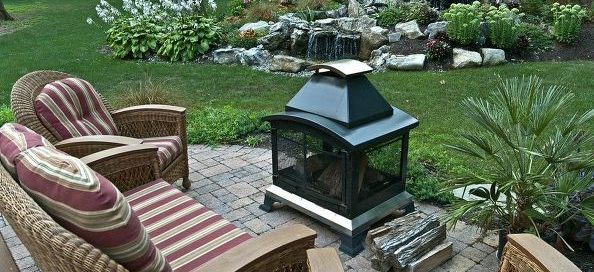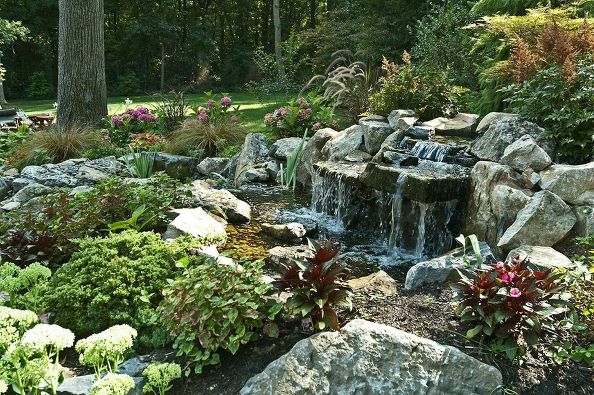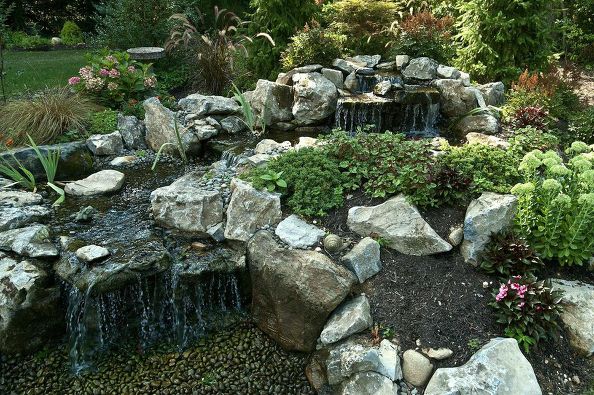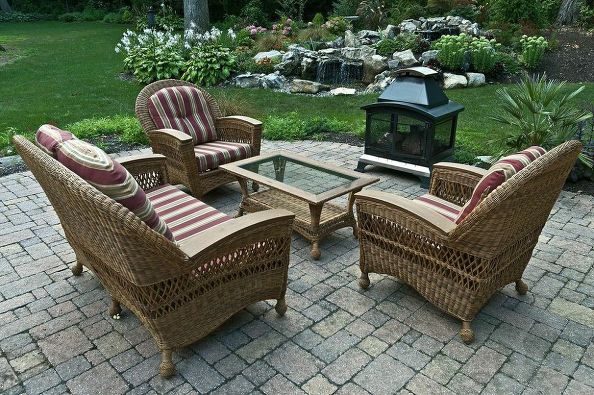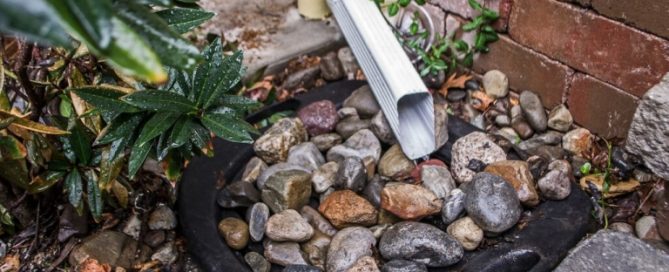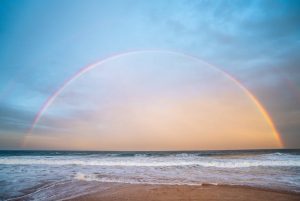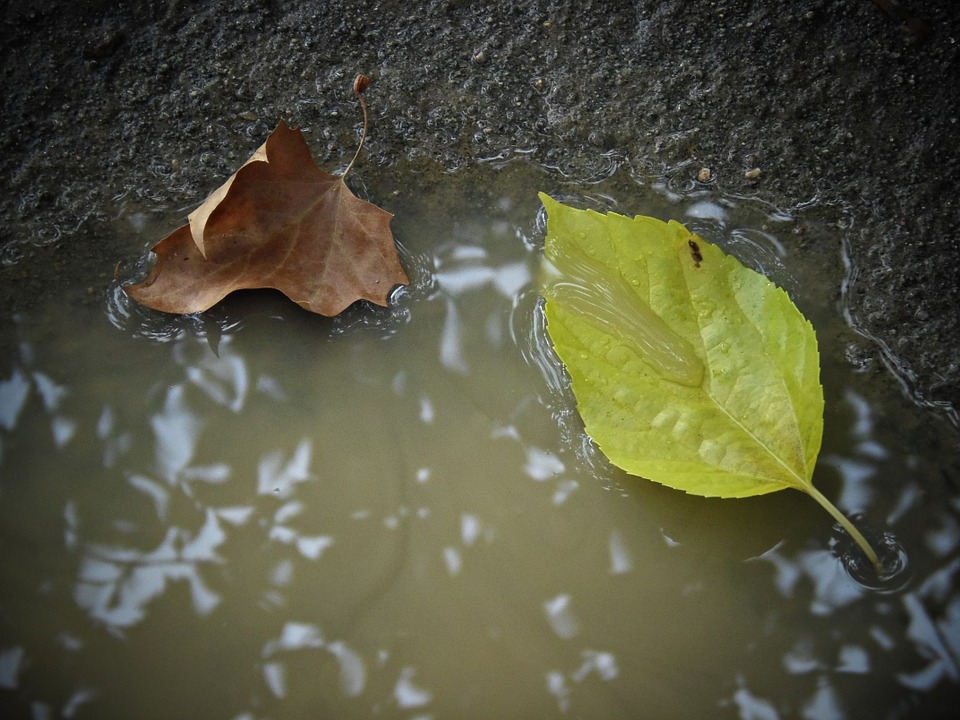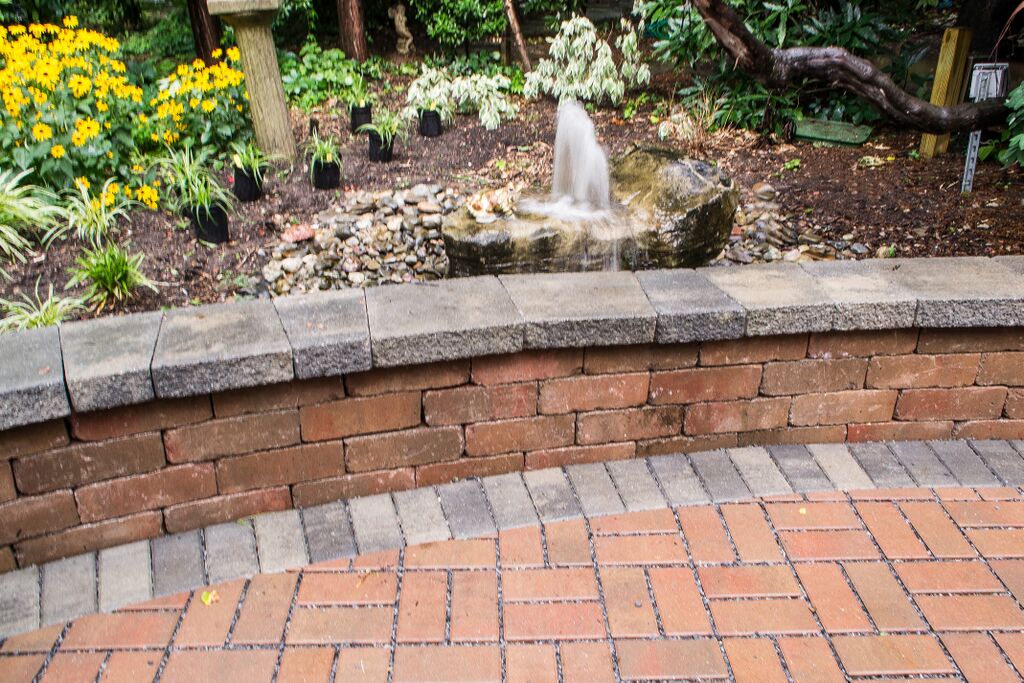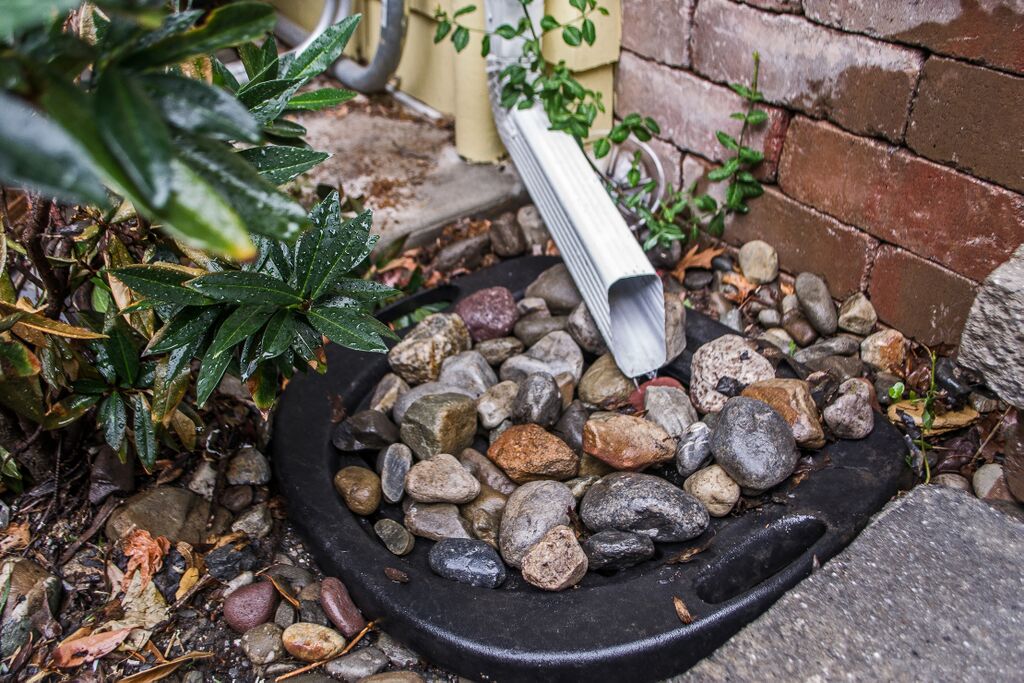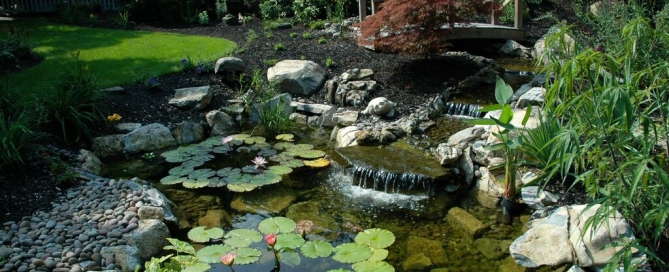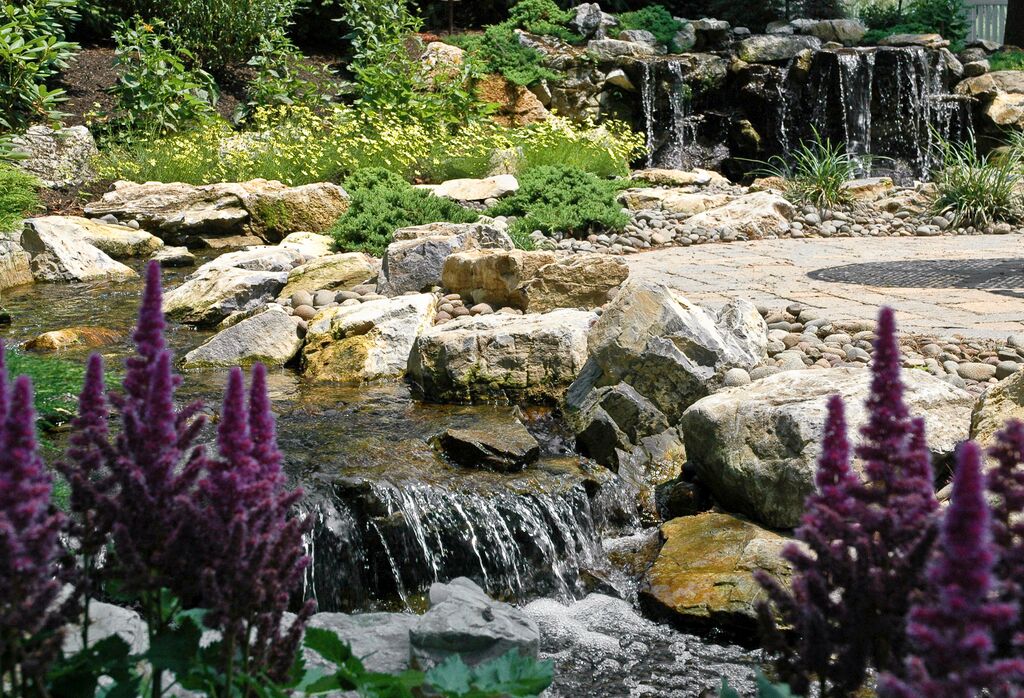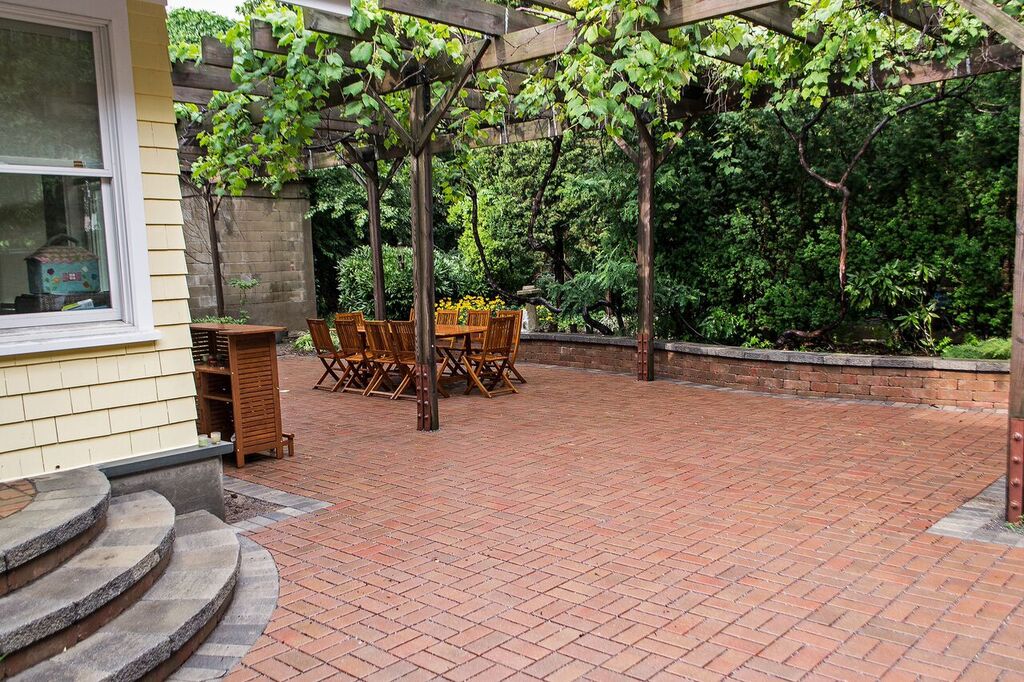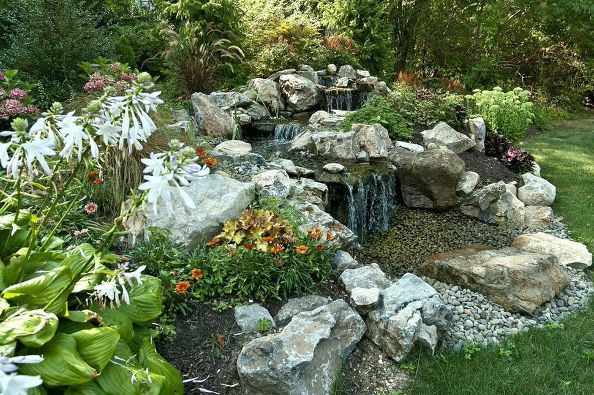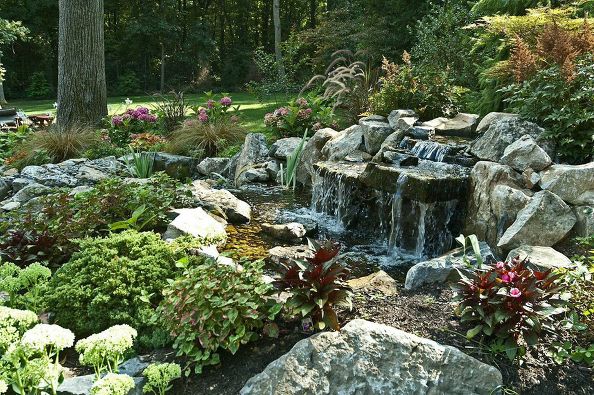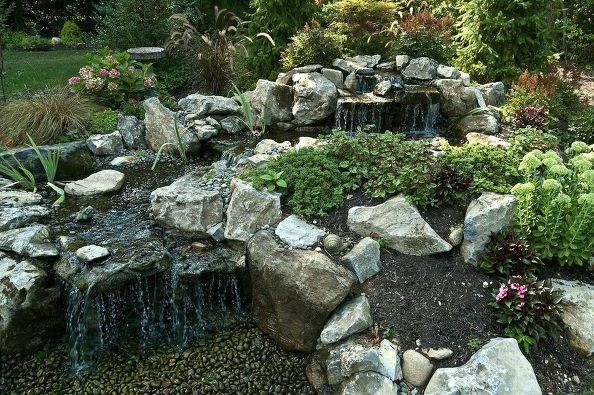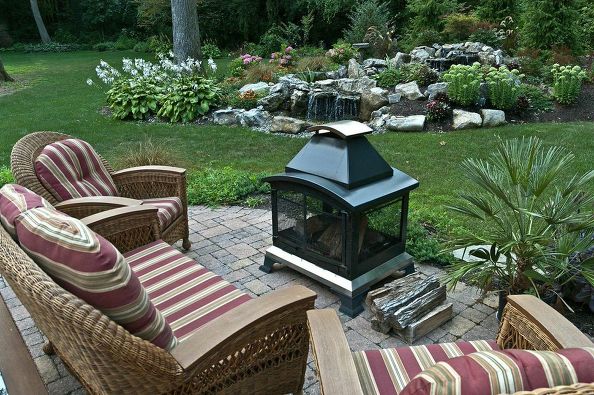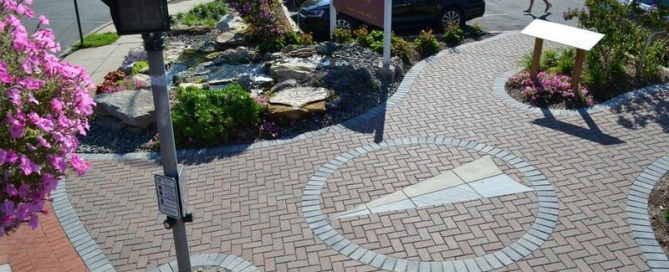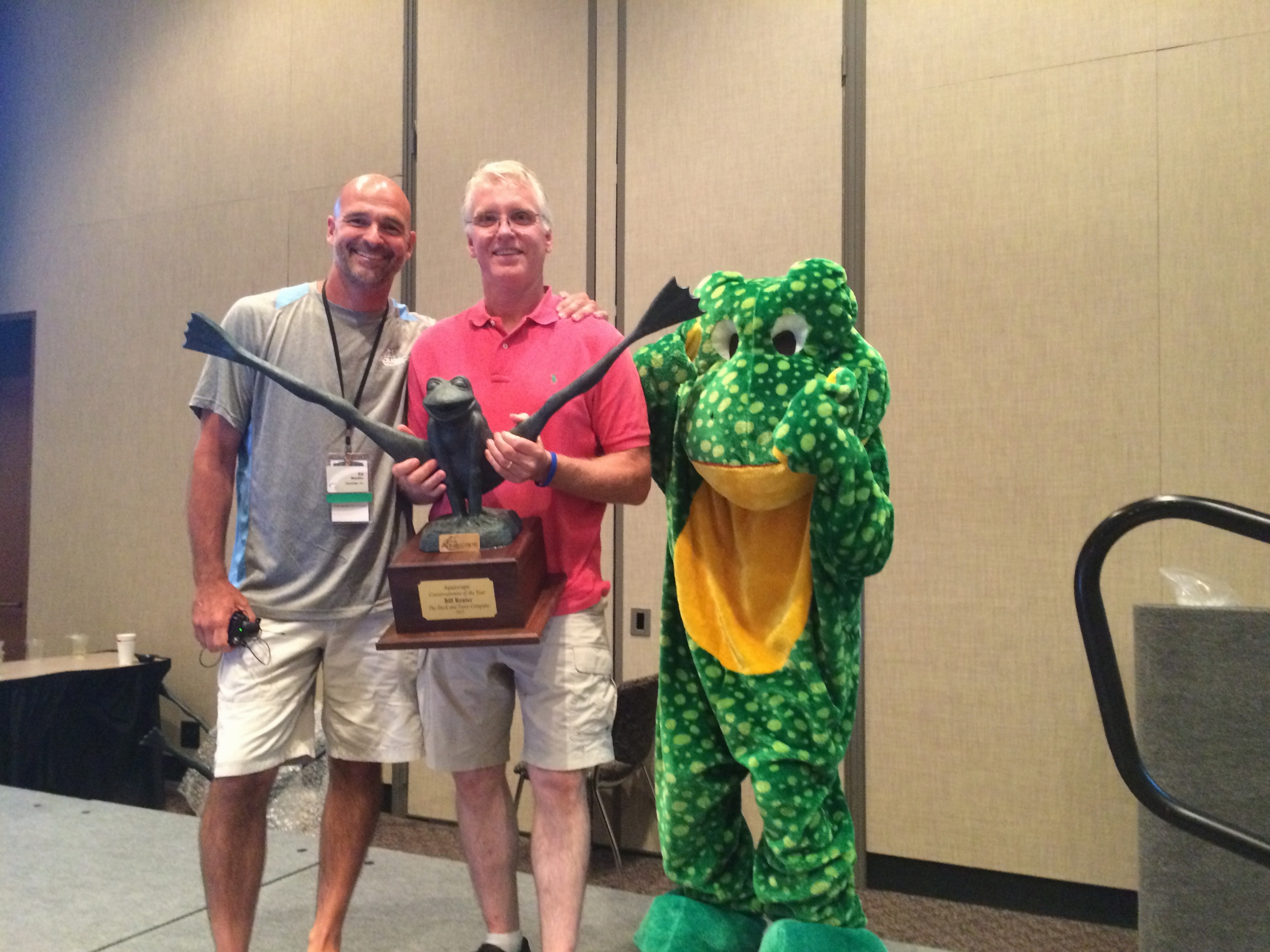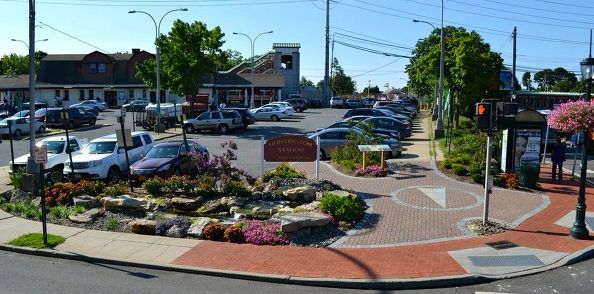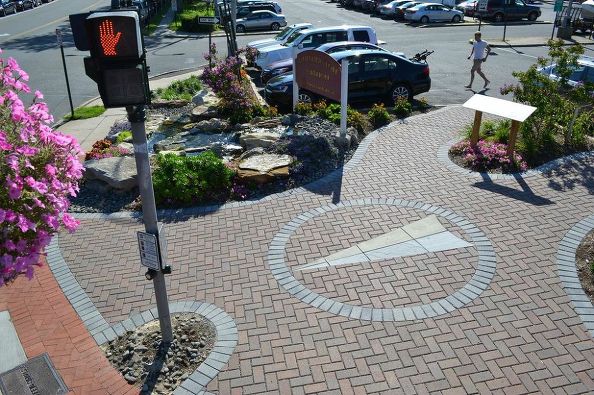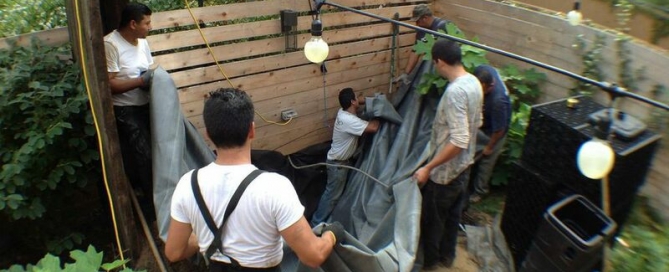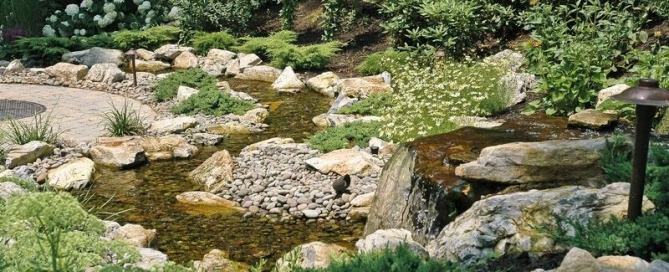‘Green’ Water Features Don’t Always Require a Pond
Sometimes, for a variety of reasons, clients want the beauty of a waterfall feature but don’t want it to include a pond.
That was the case for these clients. They were saving for a swimming pool and wanted a water feature to enjoy in the meantime. Also, since their property was a delightful wooded lot, they asked that any feature look natural so it would fit in with the surroundings.
“Their property is also adjacent to a parkland,” says Dave Stockwell, owner of Deck and Patio. This was the main reason they didn’t want a pond with any waterfall. They feared a pond, with or without koi, would attract too many wild animals.”
The solution Deck and Patio suggested was for a “pondless” system that included a stream with upper and lower waterfalls. At the end of the stream, where usually a pond would capture the spilling water, we installed a “green” pondless-reservoir underground that holds the water and recirculates it.
“With this system, the spilling water seems to disappear into the gravel,” says Dave. “But it’s really being filtered through the river rock and then a filtration system underground. After it’s collected, it is pumped back up into the stream for a continuous flow.”
We were able to make use of the property’s slope and gravity to move the water down to the waterfall. The water feature was fitted in an existing hill without need to change the terrain much at all. This location was also ideal because it meant the family could enjoy it from within the house as well as from the patio.
“Since landscaping was also important to these clients, we added a lot of vibrant plantings in different colors and textures,” says Dave. “The plants were fitted in and around hand-picked moss rocks and other natural stones in the perfect size and shape.”
For our efforts, the Long Island Pool and Spa Association (LIPSA) awarded us a Silver Medal for the project.
If you want a water feature (think stream and waterfalls) but don’t want a pond, then “pondless” is the way to go. Here, Deck and Patio used Aquascape Inc.’s pondless system which captures the water underground and recirculates it. Note how the water seems to be disappearing into the gravel where it is collected in the reservoir and redistributed.
We used evergreens (e.g., Procumbent Juniper) that are dense and green and very low maintenance; they also spread nicely. Begonias, Coleus, and flowering plants like Astilbe add punches of color.
Note how Pennisetum plantings drape around the moss rock and natural stones; we also placed each stone and used gravity to move the water in different directions as it would appear in nature.
Deck and Patio had previously built this handsome Techo-Bloc patio for the clients using “Elena” pavers in “Earth Brown.” The pavers come in kits with five differently-sized stones which allowed us to create a stylish random pattern.
Along with the plantings mentioned above, Deck and Patio planted Blood Grass, Sedum Autumn Joy, Hosta Sum and Substance; one of the water plants is Yellow Flag Iris. We also included various deciduous shrubs as well as several Norway Spruce. A Japanese Maple was added behind the upper waterfall for a its texture and color.

